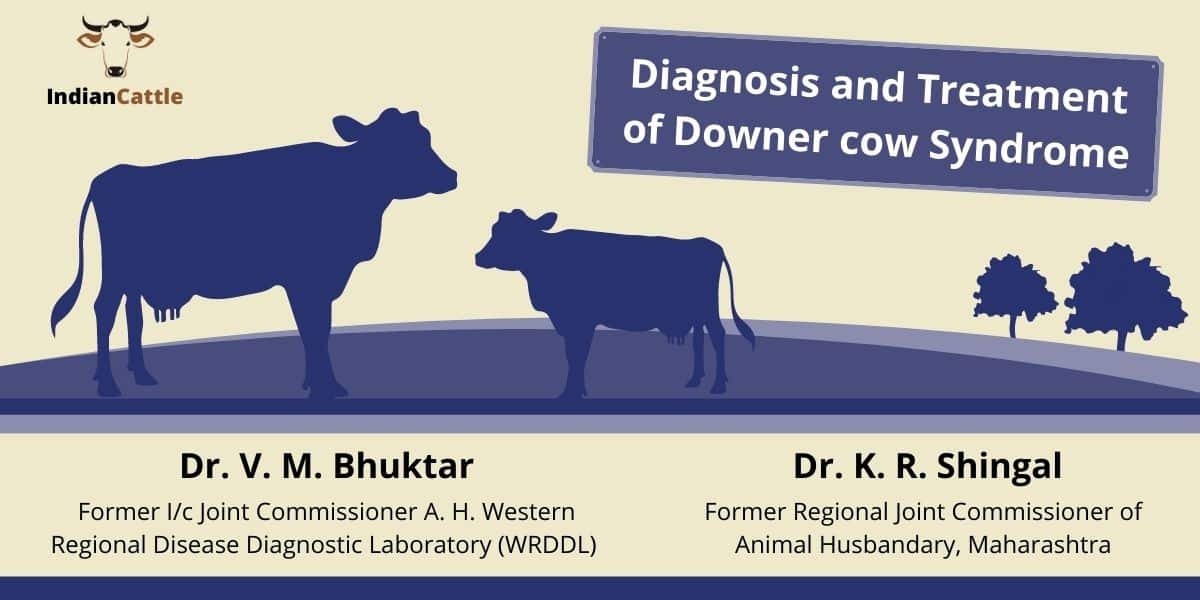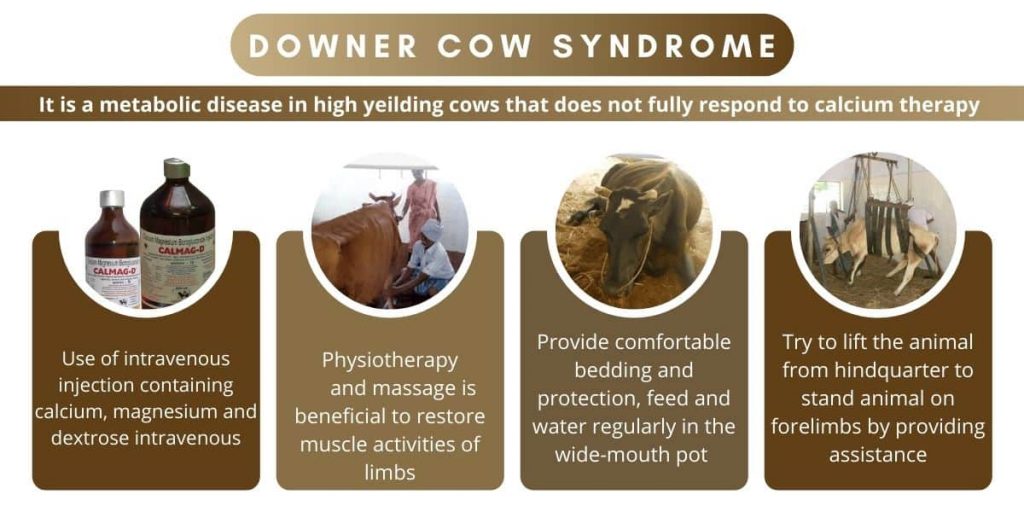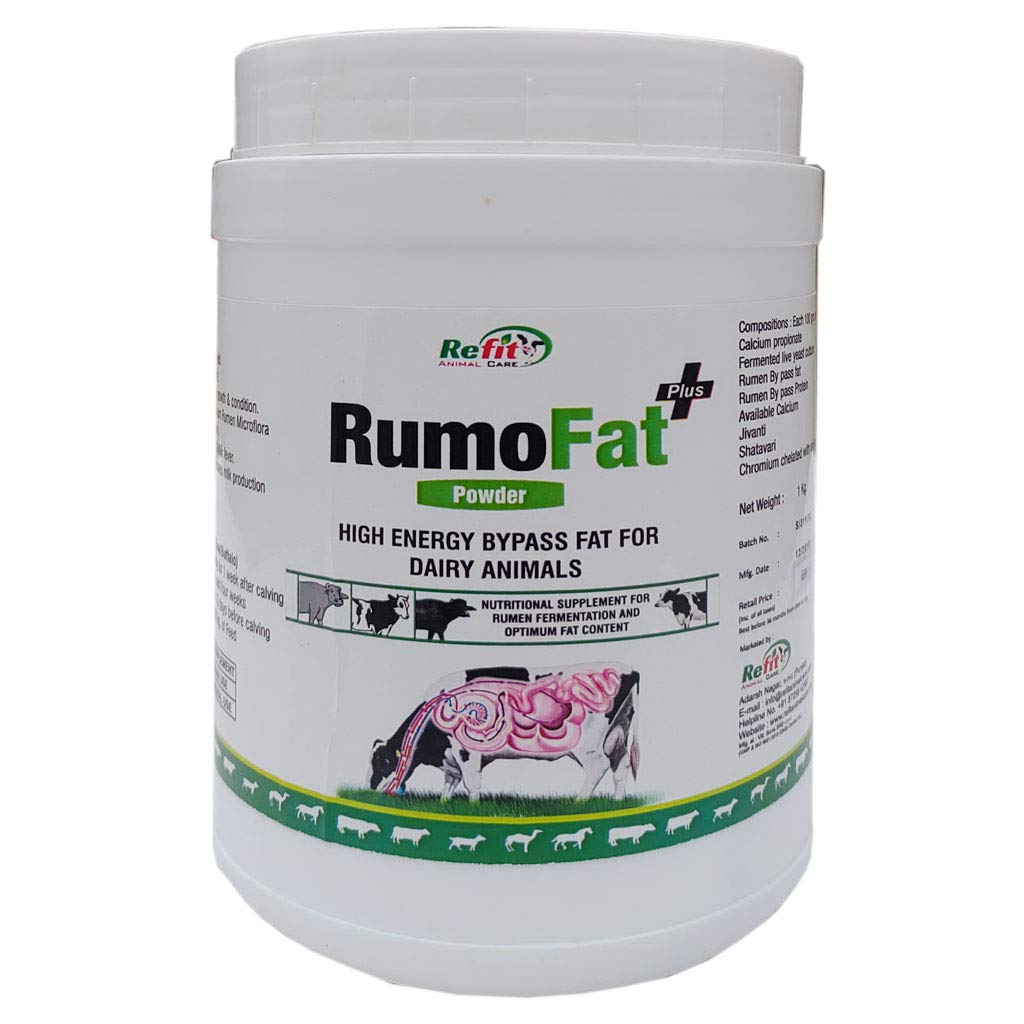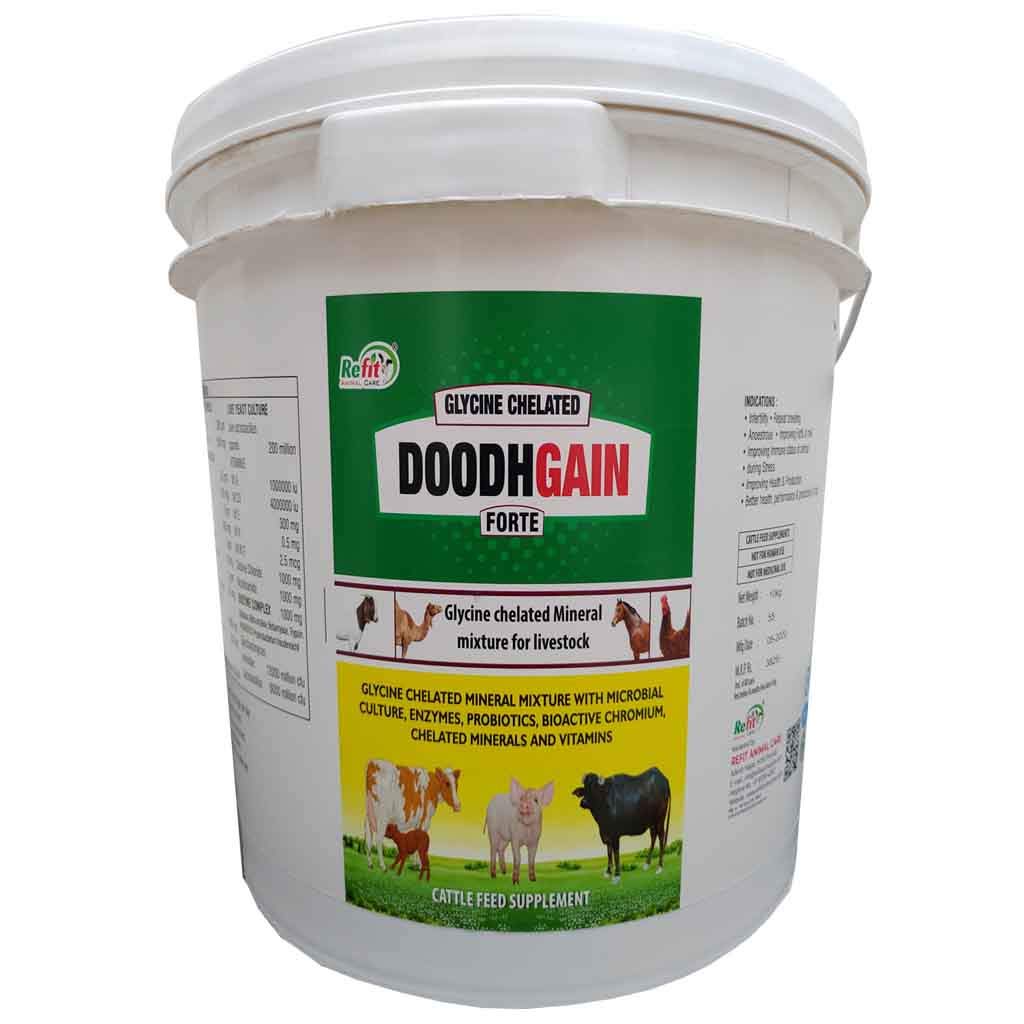
Diagnosis and Treatment of Downer Cow Syndrome
Downer cow syndrome occurs in cattle following an attack of post-parturient hypocalcaemia due largely to prolonged recumbence either because of delay in undertaking treatment or when the cow is not responsive to the calcium therapy. The term is derived since the cow is “down”, and unable to get up on its feet. The condition generally occurs in exotic and crossbred cows immediately after parturition as these are high yielders and at higher risk of hypocalcaemia.
Causal Factors:
- Traumatic injuries to limb muscles and nerves at or after calving.
- Complications of periparturient hypocalcaemia, milk fever or hypomagnesaemia.
- Ischemia due to prolonged recumbency resulting in loss of potassium from muscles leading to myotonia.
- Diseases like acute metritis, acute mastitis and toxaemia.
Clinical Symptoms:
The start of the disease is typically similar to milk fever. After parturition (sometimes before parturition), the cow shows signs of tetany, muscle tremor, hypothermia, bradycardia followed by sternal and lateral recumbency.
Downer Cow syndrome, would not respond to treatment with calcium, magnesium and dextrose. The cow remains recumbent, although feeding may be normal. Recently it has been shown that in these cases severe phosphorous deficiency might be the underlying cause, but since serum phosphorous levels are not a good indicator, this causal factor is overlooked. Secondly, preparations like calcium magnesium borogluconate use salt magnesium phosphinate, which is not a source of phosphorous. Hence the earlier assumption that the cow was treated with phosphorous was misleading. Any cow which is not able to stand post-calving, therefore, must be a suspect of downer’s syndrome.
Specimens Collection for Laboratory Diagnosis:
Serum samples for estimation of (electrolytes, like sodium, potassium and chloride), calcium, phosphorus, magnesium and potassium. Serum inorganic phosphorous is not a good indicator hence total blood phosphorus is a better test.
Differential Diagnosis:
Fracture, neurological disorders, protozoan diseases like neural ehrlichiosis.
Treatment of Downer Cow Syndrome

The treatment should be given as early as possible, immediately after exhibiting symptoms or within 24 hours by a registered or qualified veterinarian. If the recumbent condition prolongs more, death may occur.
- Use of intravenous injection containing calcium, magnesium and dextrose intravenous.
- After administering calcium-magnesium if the cow does not stand up, administer buffered phosphorous intravenous.
- Provide comfortable bedding and protection, feed and water regularly in the wide-mouth pot for easy intake, also provide balanced ration regularly. Avoid a high protein diet.
- Turn the animal from one side to another side several times daily to minimize the degree of ischemic necrosis.
- Try to lift the animal from hindquarter to stand the animal on forelimbs by providing assistance.
- Clean and disinfect the udder and teats after milking, if possible, put teat caps to avoid mastitis.
- In most cases, the temperature may normal but in some cases, it may go sub-normal also, in such cases keep the cow warm.
Read More: Diagnosis and Treatment of Mastitis in Cattle
| Dr. V. M. Bhuktar
Former I/c Joint Commissioner A. H. Western Regional Disease Diagnostic Laboratory (WRDDL) Pune M.S |
Dr. K. R. Shingal
B.V.Sc. & A.H., M.V.Sc., N.D.B.P |
Available Products in the Market:
 |
 |
 |
